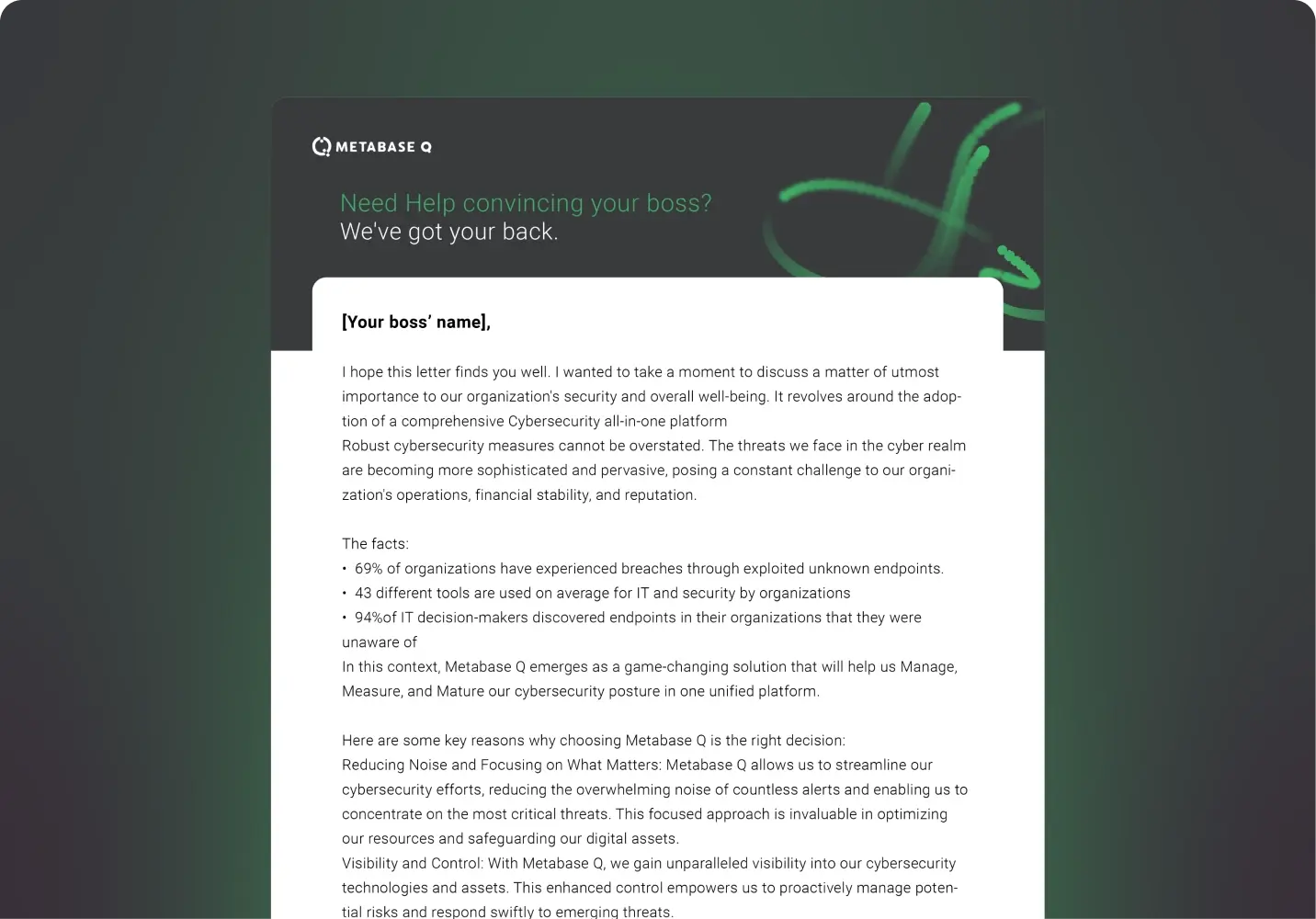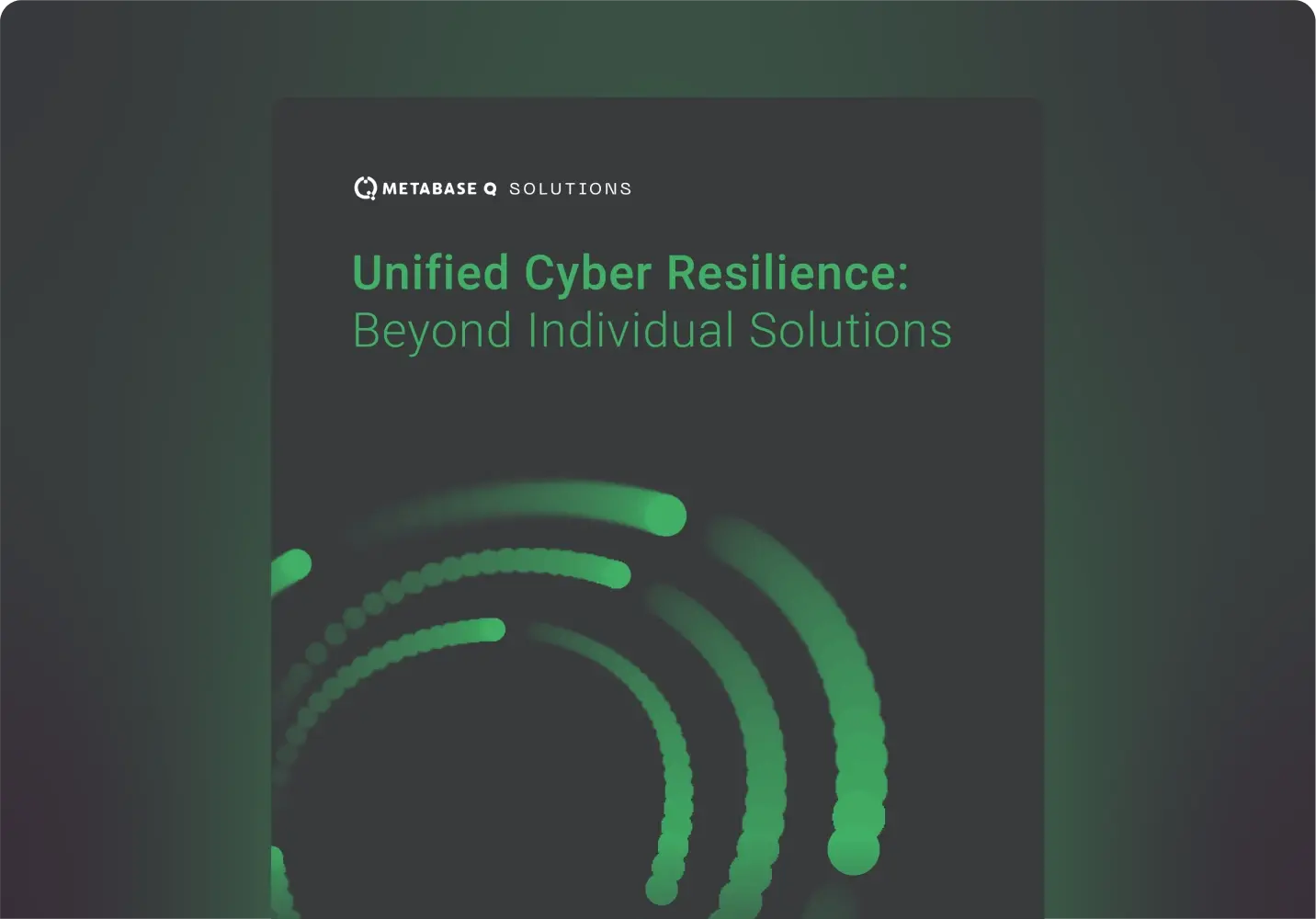
Risk-based Approach to Cybersecurity
December, 15, 2023
6 minutes read
The Communication Dilemma
Cybersecurity is often perceived as a highly technical domain, with jargon and metrics that may seem abstract to non-technical stakeholders.
Yet, its implications permeate every aspect of business operations, finances, and brand reputation.
The challenge? Ensuring that cybersecurity discussions resonate with all stakeholders, from finance professionals to executives.
Risk: The Universal Language of Business
When cybersecurity professionals speak in terms of vulnerabilities, patches, and intrusion detection, the message may get lost on those without a technical background.
Risk, on the other hand, is a concept universally understood and prioritized across all business domains.
Financial Risk/ Damage/ Consequences: Financial teams understand the bottom line. By framing cybersecurity breaches in terms of potential financial loss or impact on shareholder value, it becomes easier to communicate urgency and need.
Operational Repercussions: Executives are concerned with the smooth functioning of all business units. Highlighting how a breach can disrupt (or even halt) operations and delay deliverables can resonate with their operational goals.
Reputation at Stake: For marketers and public relations teams, the damage to brand reputation from a significant breach is a tangible and concerning risk.
Step Chart of Risk Reduction: A Detailed Examination
Every cybersecurity strategy aims at reducing risk. Yet, risk reduction isn’t linear but follows a step chart. Some interventions profoundly impact risk mitigation. Here’s how the step chart operates and how Metabase Q’s modules interplay:
Initial Risk Assessment
Every organization starts with vulnerabilities. Before interventions, the risk is at its peak due to a lack of awareness, outdated systems, or unpatched vulnerabilities.
↓
Basic Cyber Hygiene: The Initial Drop
By adopting basic cyber hygiene practices, risk dramatically decreases. This involves:
Regular System Patching: Ensuring software and systems are always updated.
Consolidation: Reducing tools and platforms in favor of integrated solutions.
BATUTA Control Deploy Module:
Efficiently manages and deploys security patches, ensuring minimized vulnerabilities.
↓
Comprehensive Inventory and Monitoring:
Foundational Risk Reduction
Knowing what assets a company has is foundational to its defense strategy.
BATUTA Control Inventory Module:
Provides a complete inventory of digital assets, ensuring no blind spots exist in the organization’s defense perimeter.
↓
Regulatory Alignment and Intelligent Insights
Staying compliant with industry regulations and gaining insights from data are crucial.
BATUTA Copilot Compliance and Insights Modules:
Ensure that businesses stay compliant, and they can glean actionable insights from their cybersecurity data.
↓
Advanced Defensive Tactics: Significant Risk Reduction
Adopting advanced measures further reduces risk:Deployment of Advanced Security Solutions: Includes AI-driven threat detection and intrusion prevention.
Regular Security Audits: Proactively identifies vulnerabilities.
BATUTA Copilot & BATUTA Copilot IR Management Tool & Batuta AI Modules:
Provides an AI cybersecurity analyst and a unified comprehensive view of your cybersecurity defense network.
↓
Proactive Threat Management: Maintaining Low Risk
Having measures in place to actively manage threats is crucial.
BATUTA Complete Zero Apt & Threat Intell Modules:
Effective balance between strengthening network perimeter protection and gaining strategic insights.
↓
Customizing Risk and Spend: Tailoring to
Business Needs
The ‘right’ level of risk and cybersecurity spend varies per company, influenced by business nature, data sensitivity, and regulations.
BATUTA Complete SOC & Forensics Module:
Provides a virtual security operation center, offering managed detection and response services ensuring rapid response, keeping risk levels consistently low.
With a suite of modules from Inventory to Forensics, businesses can customize their cybersecurity approach, balancing risk tolerance, objectives, and budget.
The CISO’s Role in Reframing the Conversation
As a Chief Information Security Officer (CISO) or cybersecurity leader, it’s crucial to pivot discussions from purely technical terms to broader business implications. Here’s how:
➔Educate & Collaborate: Hold regular meetings with different departments. Use these opportunities not just to inform but to educate, ensuring each unit understands the broader context of cybersecurity.
➔Create a Unified Risk Profile: Collaborate with finance teams to quantify potential financial repercussions of cyber threats. This profile can be a pivotal tool during budget discussions and strategic planning.
➔Engage in Scenario Planning: Organize cross-departmental sessions where potential breach scenarios are discussed. This not only underscores the importance of cybersecurity but also fosters a culture of preparedness and proactive thinking.
Why Choose Metabase Q Services
Recognizing the importance of effective communication, Metabase Q offers services tailored to bridge the gap between cybersecurity and broader business objectives. With a deep understanding of both technical challenges and corporate dynamics, Metabase Q empowers companies to have holistic, productive, and risk-focused cybersecurity conversations. By choosing Metabase Q, organizations can ensure their cybersecurity strategies are aligned, comprehensive, and well-understood across all departments.



